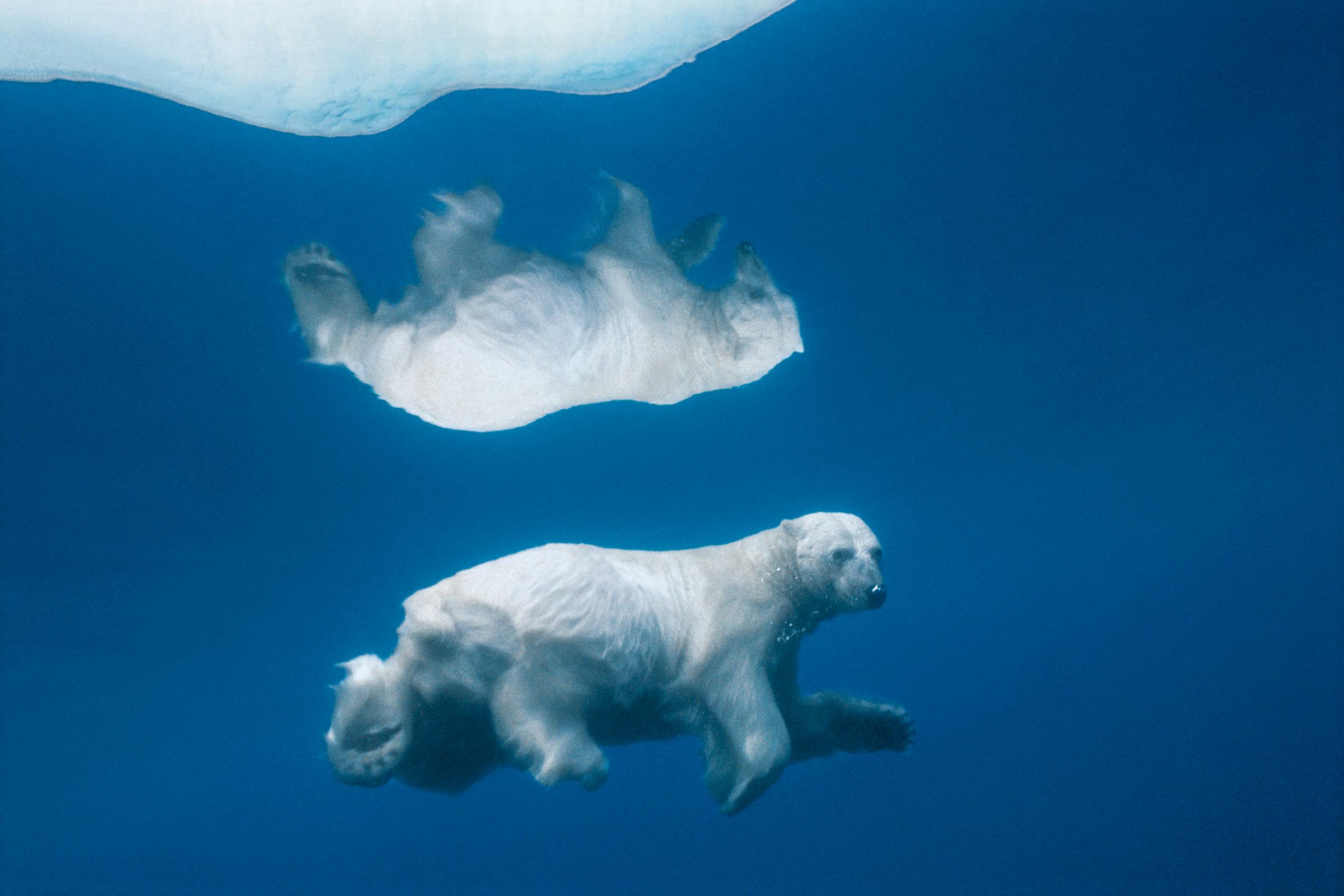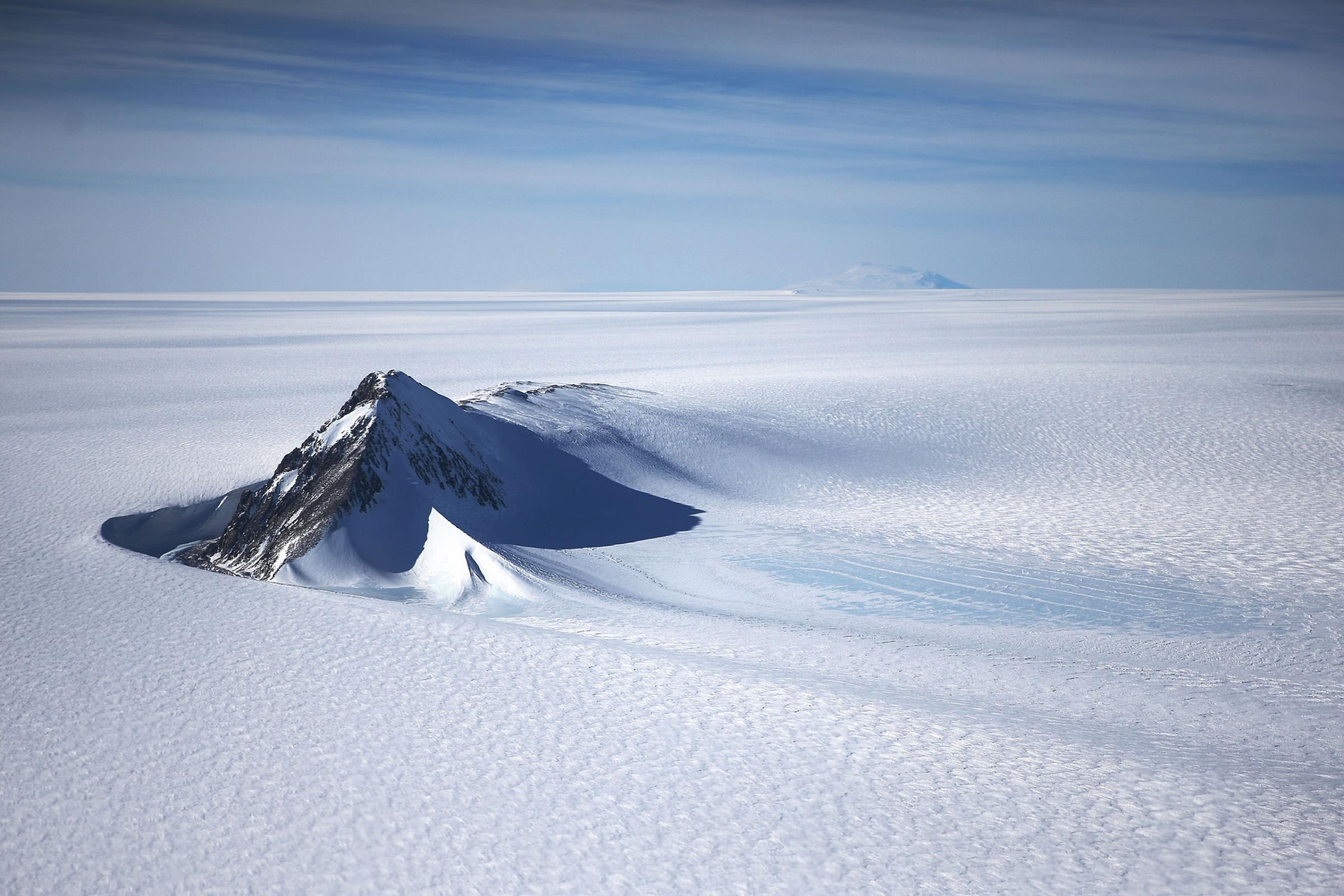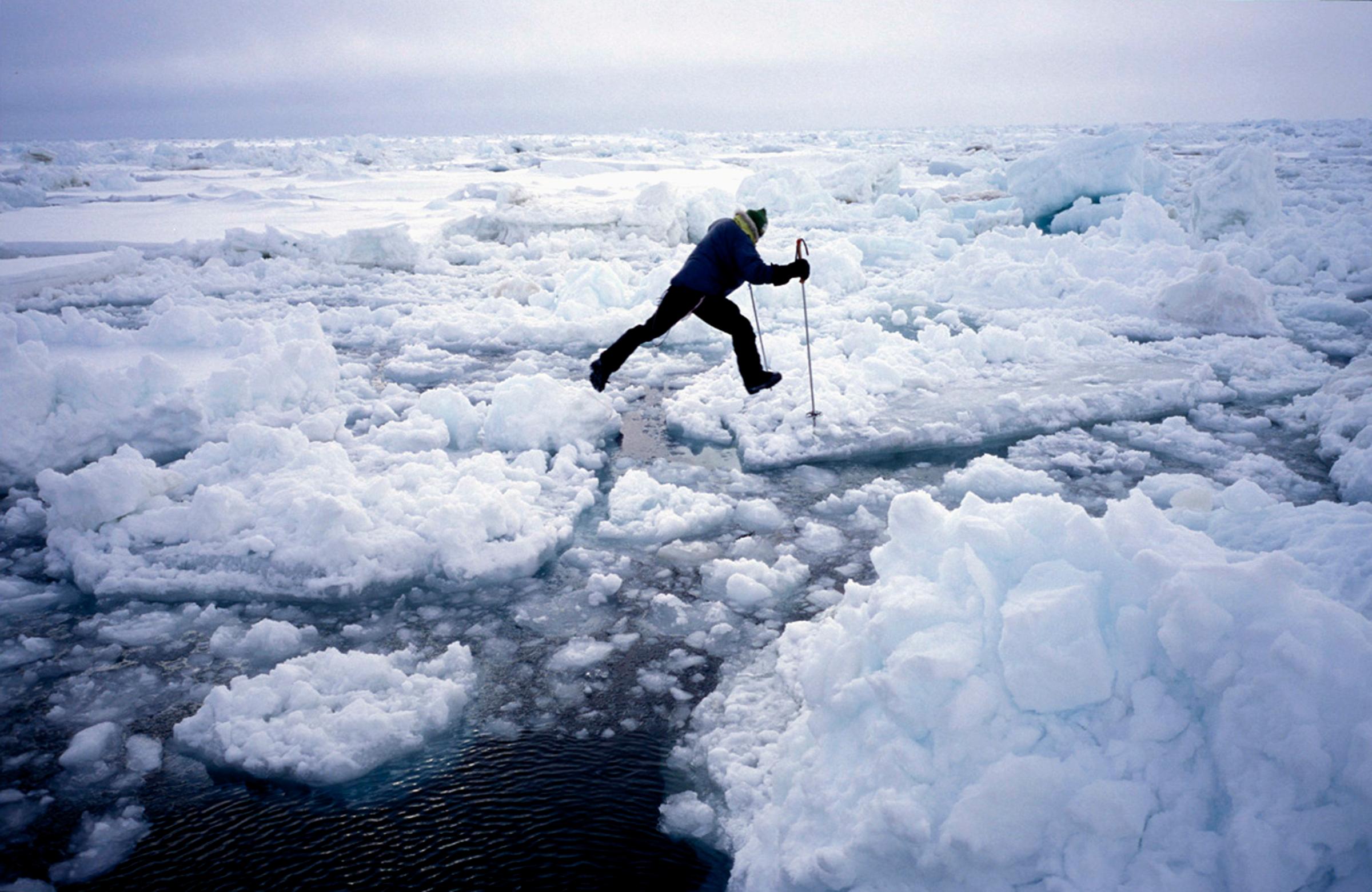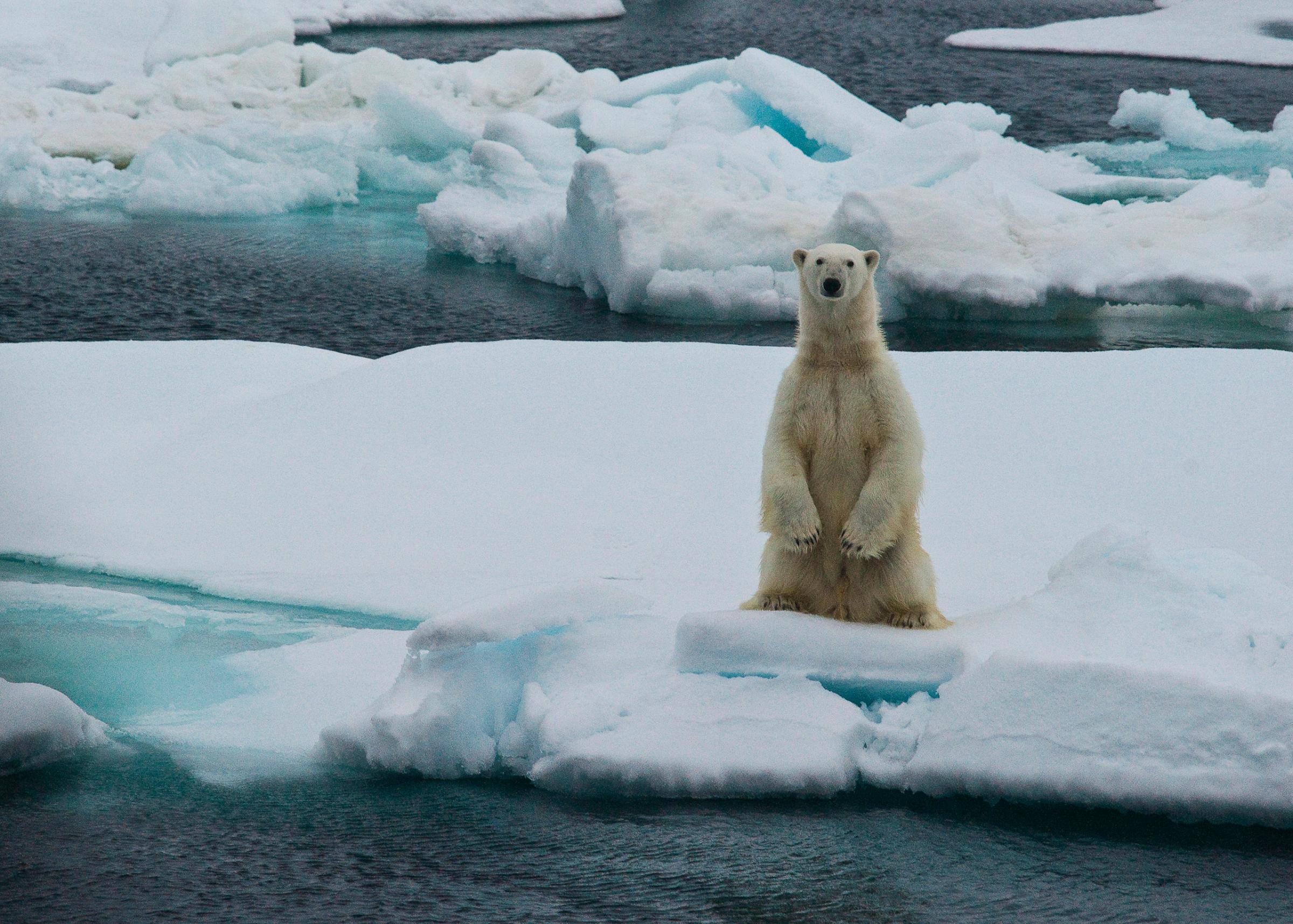Images, whether captured by a satellite, a scientist, an explorer, a photojournalist or an artist, enable us to record, study and reflect on our planet’s evolving state.
To raise awareness to the planet’s changing climate, melting ice, and its impact on polar bears, a group of scientists and conservationists with the non-profit Polar Bear International have marked Feb. 27 as the International Day of the Polar Bear. They believe that as the amount of sea ice declines, polar bears in the wild are at greater risk of extinction.
Under the Endangered Species Act—which the Republicans in Washington have said they will seek to “modernize”—polar bears are listed as a threatened species.
With recent projections of ice sheets melting at increasing rates, the polar bear’s survival (in the arctic) is dependent on the continued existence of sea ice, their natural habitat, which is in rapid decline. In Antarctica, scientists believe that ice sheets are melting at ever faster rates.
Correction: The original version of a photo caption misstated the location where a polar bear was photographed underwater. It was in Lancaster Sound of the Canadian Arctic, not in Alaska.
Paul Nicklen – Canadian Biologist and Wildlife Photographer

This photo of a polar bear reflected swimming underwater is probably the most popular of my images, and one I hold dear. I hope it helps people learn more about how dangerous climate change is for polar bears. Every year the Arctic Sea ice recedes further and leaves them quite literally swimming for their lives. Many of them drown as they desperately swim farther and farther in the search for food.
This is why we founded SeaLegacy as a non-profit ocean conservation with the aim to protect 20% of the oceans by 2020. If we don’t create urgency, empathy and immediate action for these animals and their environments, none of these images will mean anything. We need to act, now.
Mario Tama – Photojournalist

I had the incredible privilege to join the NASA Operation IceBridge team for three science flights over Antarctica aboard their DC-8 airborne science laboratory. The team is studying how polar ice is evolving and was flying a set of 10-12-hour research flights over West Antarctica, departing from southern Chile, at the start of the melt season late last year.
I won’t forget when one of the observers casually mentioned, as we passed one mountain top peeking through a seemingly endless sea of ice, that much of North America could have appeared this way 15,000 years ago.
To wrap your head around that is to understand the importance of the work IceBridge is doing. According to the USGS, nearly 90% of the Earth’s ice mass is in Antarctica.
John Sontag – NASA’s Operation IceBridge Mission Scientist

I took that photo while aboard NASA’s DC-8 aircraft, flying over the large rift on the Larsen-C ice shelf, on Nov. 10, 2016.
We weren’t the first to discover the rift (that was done by European colleagues perusing satellite data several weeks prior to our flight.) But we certainly got a good look at it, flying directly over it several times that day at low altitude.
When the outboard portion eventually breaks off completely from the ice shelf, it will form a tremendous iceberg, over 100 miles long, 20-30 miles wide, and hundreds of feet thick.
We had the rare privilege of seeing that colossal iceberg during the process of its birth.
Borge Ousland – Polar Explorer

I have seen huge changes on the Polar Ocean since my first expedition to the North Pole in 1990. The ice is 30% thinner now compared to then and also cover much less areas. Hungry polar bears are becoming more aggressive when they get stuck on land with no ice around to hunt seals on.
Cristina Mittermeir – Photographer, Writer and Conservationist

As masters of their realm, polar bears are the most iconic species in the Arctic. If our efforts to curb climate change fall short, their numbers will continue to decline and we could face the extinction of these mighty hunters in the next 25 years.
If there is to be any hope for wildlife and biodiversity, we cannot afford to allow polar bears to slide into oblivion. My hope is that my images are more than a record of their passing and become more like a banner to rally for their protection.
Bryndís Snæbjörnsdóttir and Mark Wilson – Artists in Residence at the Anchorage Museum

The polar bear and the study of the polar bear, recreationally or scientifically, allows us mental if not physical access to what many may see as another world. Although our perception of this wilderness is in flux, the romanticism of its distance and impermeability prevails: this becomes a problem in itself.
Like the endangered, dangerous animal moving as it has from its undoubted position as the largest and potentially most dangerous land carnivore in the world to one of an icon of the fragility of nature, it is itself in a perceptual transition from that of inhospitable and dangerous place to a place that must be cared for and looked after.
More Must-Reads from TIME
- How the Electoral College Actually Works
- Your Vote Is Safe
- Mel Robbins Will Make You Do It
- Why Vinegar Is So Good for You
- The Surprising Health Benefits of Pain
- You Don’t Have to Dread the End of Daylight Saving
- The 20 Best Halloween TV Episodes of All Time
- Meet TIME's Newest Class of Next Generation Leaders
Contact us at letters@time.com